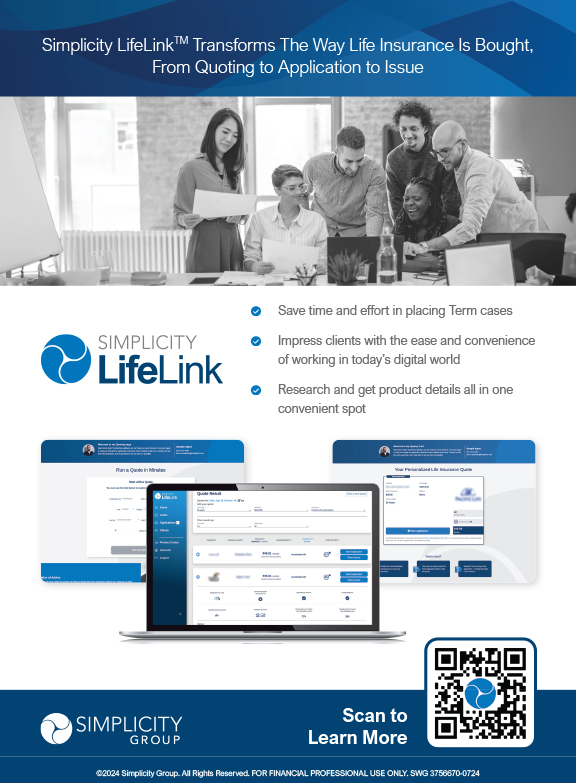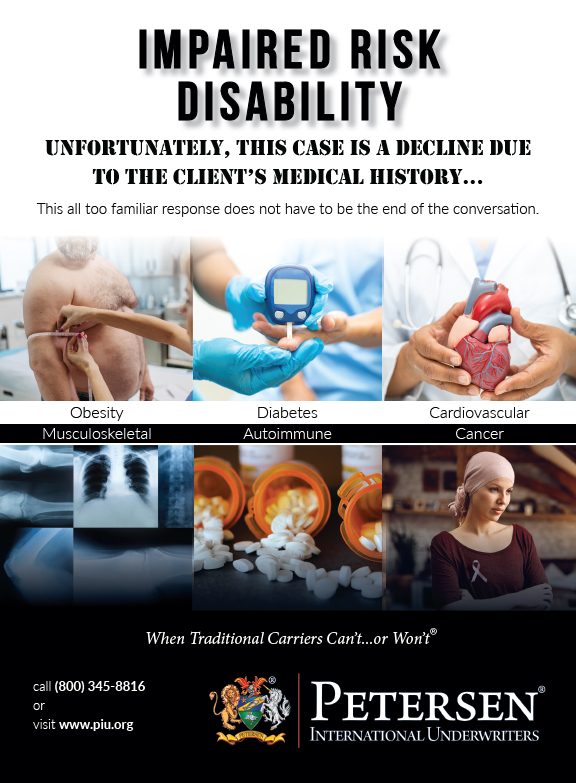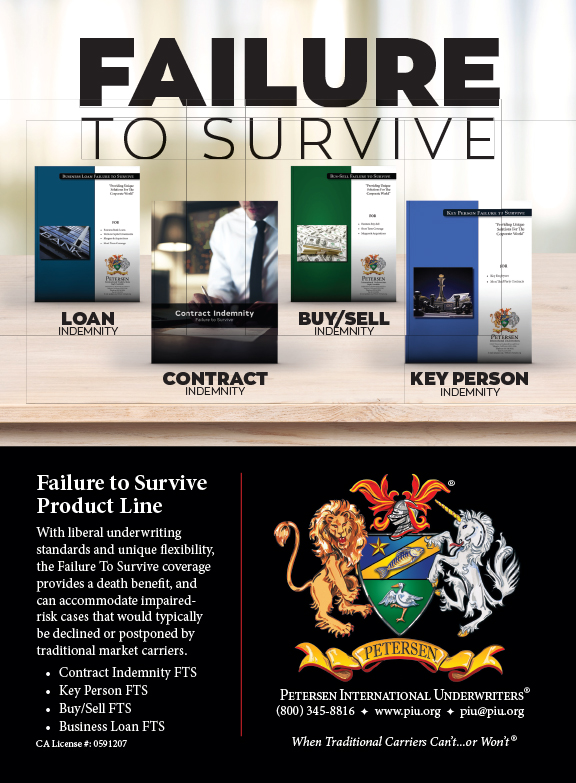Much the same could be said about the long term care insurance industry, but first these headlines:
- There are more options for long term care insurance products/planning solutions today than in recent memory.
- Three distinct classes of policies/programs have risen from the ashes of the long term care insurance heyday of the mid-2000’s:
- Traditional
- Hybrid and Linked
- Long term care planning for people who failed to plan
- The game will be won by proactive agents and BGAs that focus on the consequences of not planning for an extended care event (thank you Harley Gordon), and by fitting the right client to the appropriate liquidity and underwriting solution.
Pollyanna I am not. But a clear-eyed view of the shifting tectonic plates in the world of long term care planning informs me that much positive energy and change is upon us.
A high-level perspective of the situation indicates that public policy concerns and private sector innovation are actually beginning to help consumers. Federal and state initiatives are focused on tackling many dysfunctions in how we finance and provide for long term care. There is also some acceptance that this problem cannot be solved without affordable private insurance options. The Society of Actuaries Long-Term Care Section has been providing excellent guidance and innovative concepts to the government and private sector on myriad topics. Bottom line: there’s a lot of intellectual firepower arrayed to help individuals cope with an extended care event.
While traditional long term care insurance sales (by premium volume and number of policies sold) have continued to slide, a broader view of long term care planning product solutions, including hybrid, linked and short term care policies, bears consideration. By cobbling together reports by LIMRA and the American Association for Long-Term Care Insurance, it appears the total number of policies with some sort of long term care benefits sold in 2015 meets or exceeds the total of traditional and combo policies sold ten years ago.
While in-force rate increases continue to vex legacy blocks of traditional LTCI, a 2015 Society of Actuaries study (reported at last year’s NAILBA annual meeting) shows that policies issued in 2014 or after have a low (10 percent) chance of future rate increases versus those issued in 2000 (40 percent). The amounts of anticipated rate increases are also greatly reduced on currently priced policies. Another important good news story from Life Plans is that claims are being paid, and there is generally high consumer satisfaction amongst claimants and caregivers when traditional policies are called on to keep the promise we made at time of sale.
Companies remaining in traditional LTCI continue to adapt, and some are growing. Last year Genworth did several studies that refocused sales efforts on lower premium price-points and smaller benefit packages. This has resulted in multiple carriers re-packaging existing benefit plans and a re-thinking of how best to underwrite the risk. On the opposite end of the spectrum, National Guardian Life has revived the corporate carve-out market by bringing back lifetime benefits, 10-pay, 1-pay and return of premium options. Multi-life continues to be alive and well at LifeSecure and Transamerica. Finally, I was recently at the Mutual of Omaha home office and was advised that they like the traditional risk and have capacity for more.
The life hybrid product market with 101(g) chronic illness riders continues to expand. More important, the benefits have improved. In 2014 I wrote several articles outlining the variances between 7702(b) long term care and 101(g) chronic illness benefits, cautioning producers and advisors to be mindful of differences, primarily the permanent disability language in 101(g). What a difference two years makes! Thanks to innovation at the Interstate Insurance Compact, 101(g) riders are no longer required to contain the permanent disability restriction. Therefore, they resemble and operate more closely to the long term care benefits to which we traditionalists are accustomed. Additionally, a notable market advantage of 101(g) policies is: they do not require continuing education to solicit, thus removing a bar to entry for many agents.
Two or three years ago I wouldn’t have thought I’d be telling you how to help those who failed to plan for a long term care event. Today, there are two products specifically designed to enhance and/or guarantee income for individuals currently receiving care. Genworth’s Income Assurance is a medically underwritten single premium immediate annuity, focused on long term care benefits. LifeCare Funding’s Long-Term Care Benefit Program converts unneeded or unwanted life insurance into beneficial cash for care. Together they are powerful tools for families in need now.
Who are the consumers for these product innovations?
- Folks with modest means, intent on controlling the care they receive, and must supplement their fixed retirement income by liquidating other assets to pay for care. Two additional complications often raise their ugly heads: there is another call on the retirement income and assets, namely the healthy spouse. Also, liquidating an income-producing asset to pay for care reduces retirement income and may create a negative tax issue.
- Wealthy clients may have the income and assets to pay for whatever care they desire. However, an open-ended drain of treasure could negatively impact heirs or others for whom the client had hoped to provide a legacy. In this case it would be helpful to create a wall or stop-loss to protect that inheritance.
- Well-off children who are paying for care of their parents. Again, while they may be able to afford the cash-flow or asset drain to pay for the care, creating a stop-loss against an open-ended financial commitment makes sense.
These consumers have needs in common: leveraged cash flow enhancement, effective utilization of existing financial tools, and a guarantee not to run out of money to pay for care. These are knotty problems indeed, particularly since the horse has already left the barn! The good news is that you may be able to offer solutions to consumers who face the costs of long term care without insurance (or without adequate coverage).
In review, here’s what I see as current reality:
- A stabilized traditional marketplace with companies that want new premium, are willing to consider more consumers with different underwriting needs, and offer pricing options that can fit more budgets.
- An expanding life hybrid and linked marketplace that is a viable alternative to traditional coverage choices. The products span the life and annuity spectrum with varying degrees of underwriting nuance that can help the non-traditional consumer.
- Long term care financing options for individuals who are already receiving care at home or in a facility. This is an enormous and growing untapped market and an opportunity for a second bite of the apple.
So Pollyanna no, cautiously optimistic yes. However, the key to sales success continues to be in the hands of agents, advisors and brokerage general agents who are willing to be proactive in their pursuit of providing financing solutions for those planning for or in need of long term care. The opportunity is clear to me because over the last few years I’ve seen so many abandon the effort to help clients in this area. One cannot wait for a consumer to call asking for help; at that point it’s usually too late to offer the best and most affordable solutions.
Time and health are perishable commodities in long term care planning. Our job isn’t complete unless we ask clients the question, “Have you considered the consequences of not planning for an extended care event?”


























